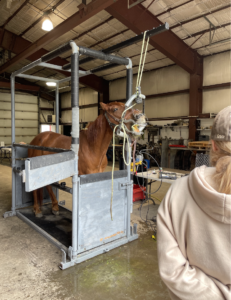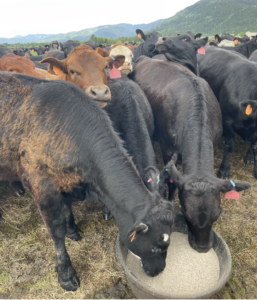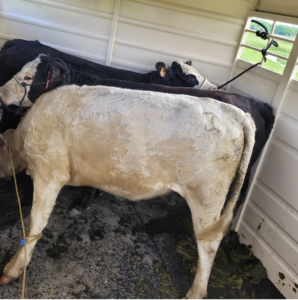Treating the Horses & Cattle
#bfrdpwy #aginternship #RightRisk

This week we addressed a lot of health issues with our ranch horses. We took two of our horses, who had been lame for a few weeks now, to the vet to get properly diagnosed. One, we found out, is navicular, meaning the navicular bone is inflamed or fractured. He will never recover from this and is basically now only cleared to be used as a kid horse. The other, though, seems to just have a little inflammation in the tissues around the navicular bone. This is a much more promising diagnosis because we can try to treat this using Bute heavily for a week and also administering shock wave therapy. Further than that, a few of the other horses had their teeth floated. Some of them were just old and their teeth needed some attention, while the others were younger horses who had some problems with taking the bit. We hoped that floating their teeth would eliminate any possible issues with sores or cuts in their mouth being a cause of their behavior.

Other than horse health issues, we are starting to see a lot more sickness and hoof rot on the cattle side of things. This means the frequency of us doctoring cattle is becoming more and more. We see hoof rot in our white cattle more often, which I learned is because their feet are softer, making them more prone to it. When we find an animal with hoof rot, we run a tie string back and forth between their hooves to break up the scabs and stimulate more blood flow to promote healing. We treat for foot rot with SulfaMed for antibacterial purposes, and Banamine for pain and inflammation. SulfaMed is a cheaper antibiotic, so we can afford to administer 35-45ccs each time we doctor.
Banamine, however, is much more expensive and dangerous, we generally only use about 8ccs. Both are injected intravenously in the neck. It is important to continually make sure you are still in the vein throughout the injection and to also not inject the medicine too fast or inject any air into the vein. Once we have doctored an animal multiple times with no effect, we will just pull it and trailer it back to the ranch headquarters to be put on drier ground and monitored more closely.

A question I have from this week is if there is any way at all to prevent or combat foot rot even in extremely wet conditions (like our flood irrigated fields). Is there some sort of mineral or vitamin that could be heavily supplemented to keep the cattle in a better condition to be able to fight hoof rot? Would having deliberate dry spots allow the cattle to gather there throughout the day when they aren’t grazing so they can get out of the marsh? Or, would the cattle even know to do that?
I will use what I learned this week to add to my knowledge of horse health to care for my horses in the future in every way I can. I have really come to love working with horses and starting to know my way around them. It’s a very rewarding and fulfilling experience and I am excited to continue to learn more about them.
Submitted by: Isabella Schultz
Edits by: GrowinG Internship Team

